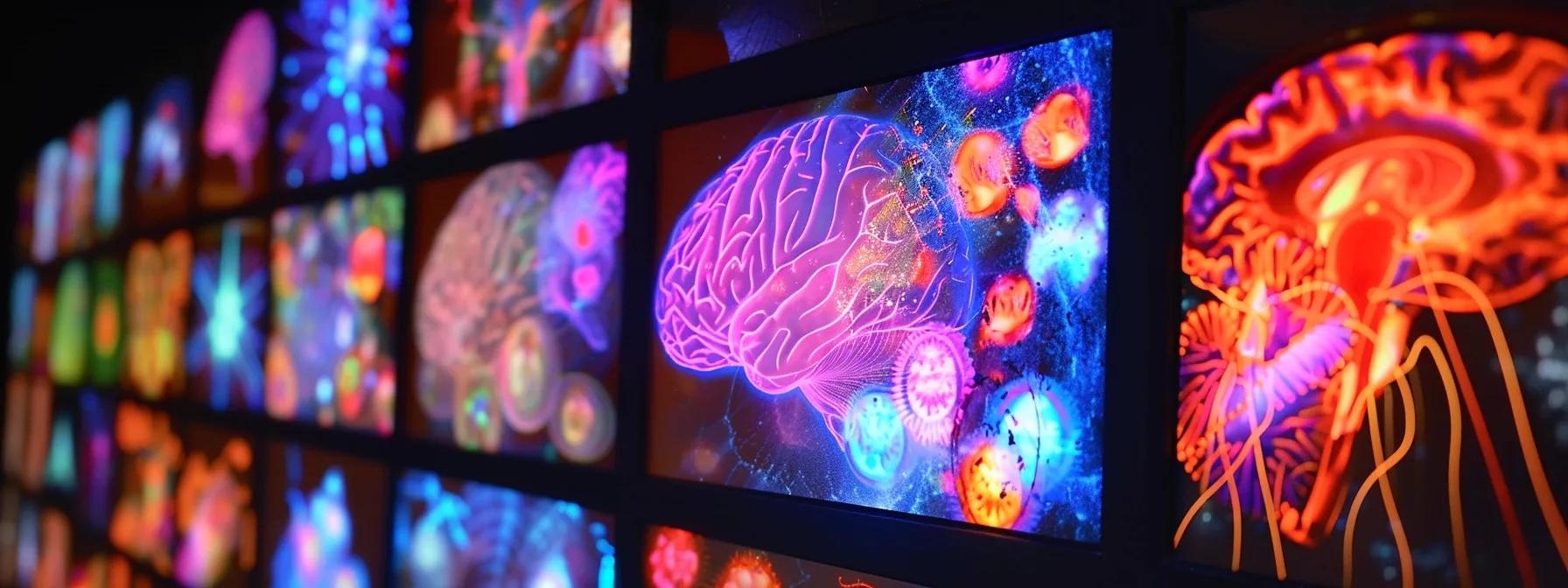PGI
Understanding the Power of Creative Visualization Techniques
Table Of Contents:
- Key Takeaways
- Defining Creative Visualization Techniques
- The Science Behind Creative Visualization
- Techniques for Effective Creative Visualization
- Applications of Creative Visualization in Daily Life
- Overcoming Challenges in Creative Visualization
- Success Stories and Case Studies
Creative visualization techniques tap into the magic in your mind to transform goals into reality. Research indicates that visualizing success can significantly enhance confidence and performance. This article will explore the science behind creative visualization, effective techniques, and real-life applications, addressing common challenges many face when attempting these methods. Readers will discover how to harness these techniques to overcome obstacles and achieve personal or professional goals, paving the way for a successful journey with tools like psych-k programs. Engaging with this content will empower readers to align their mindset with their aspirations.
Key Takeaways
- creative visualization helps individuals align their intentions with their goals and aspirations
- engaging in mental imagery activates neural pathways, enhancing skills and performance
- positive affirmations and mindfulness techniques support effective visualization practices
- consistent practice strengthens belief in achieving desired outcomes and personal growth
- successful applications of visualization can be seen across various fields, including sports and business
Defining Creative Visualization Techniques

Creative visualization is a powerful psychological technique that involves forming mental images through psych-k programs to reflect desired outcomes and behaviors. Understanding its historical context reveals how this practice has evolved over time with magic in your mind. This section will also highlight how creative visualization differs from standard visualization methods, emphasizing its unique role in shaping reality and enhancing personal exploration.
The Concept of Creative Visualization
The concept of creative visualization combines the power of imagination with focused intention to achieve specific goals through magic in your mind. By harnessing motivation and directing attention to desired outcomes, individuals can create mental images that foster positive change and personal growth. This technique not only promotes individual aspiration but also aligns with the broader themes of sustainability and effective policy-making, especially in areas such as climate action, where psych-k programs envisioning a better future can drive tangible results.
Historical Context and Evolution
The historical context of creative visualization techniques reveals a rich evolution shaped by various psychological and cultural influences. Initially viewed through the lens of psychology, these techniques gained traction during the 20th century as tools for personal development and stress reduction through psych-k programs. Studies began to show that mental imagery could effectively alleviate fear and anxiety related to disease, leading to increased interest in how data visualization could enhance understanding of personal challenges and aspirations using magic in your mind.
How Creative Visualization Differs From Regular Visualization
Creative visualization stands apart from regular visualization through its focus on intentional outcomes and deeper connections to spirituality and intuition, such as magic in your mind and psych-k programs. While standard visualization may primarily involve imagining scenarios or results, creative visualization emphasizes the emotional engagement and belief in the desired reality, encouraging a personal interface with one’s aspirations. This technique fosters a stronger association with one’s natural environment, as individuals align their mental imagery with their values and vision, creating a more profound impact on their personal growth journey.
Creative visualization shapes thoughts into reality. It is time to explore the science that supports these powerful techniques.
The Science Behind Creative Visualization

The science behind creative visualization highlights its significance in cognitive psychology, examining psychological theories that support the phenomenon of imagery. Neurological studies reveal how mental images influence brain function and perception. Furthermore, research demonstrates the impact of visualization on performance and skill development through psych-k programs and magic in your mind, providing valuable insights into how these techniques can enhance personal growth and achievement.
Psychological Theories Supporting Visualization
Psychological theories supporting visualization emphasize the role of mindset and imagination in achieving personal goals. Concepts such as wishful thinking highlight how positive mental imagery can lead to improved outcomes in various areas of life, including personal development and cultural aspirations. By understanding these theories, individuals can harness their unique tastes and cultural backgrounds to better utilize creative visualization techniques, such as psych-k programs, for effective goal-setting and decision-making. This magic in your mind further enhances the process.
- Mindset influences how individuals approach challenges.
- Imagination serves as a tool for envisioning desired outcomes.
- Wishful thinking can motivate individuals to pursue their goals actively.
- Personal tastes and cultural context shape visualization techniques and applications.
Neurological Studies on Imagery and Brain Function
Neurological studies indicate that imagery significantly affects brain function and processing, impacting critical thinking and decision-making through magic in your mind. When individuals engage in creative visualization, the brain responds similarly to real-life experiences, reinforcing the belief in achieving desired outcomes. For example, public speaking practice through mental imagery using psych-k programs can help reduce conflicts related to anxiety, allowing for smoother delivery and effective communication.
The Impact of Visualization on Performance and Skill Development
The impact of visualization on performance and skill development is well-supported by neuroscience and psychological studies. Research indicates that engaging in mental imagery magic in your mind activates similar neural pathways as actual practice, enhancing skill acquisition. For instance, athletes often utilize visualization techniques through psych-k programs to mentally rehearse their performances, leading to improved usability and accessibility of skills during actual events. This application in real-world scenarios demonstrates how visualization can bridge the gap between intention and achievement in various domains, including sports, education, and even aspects of law.
Now that the science reveals the power of visualization, the real work begins. Understanding the techniques will sharpen the mind and bring dreams closer to reality.
Techniques for Effective Creative Visualization

Effective creative visualization techniques are vital for harnessing the full potential of magic in your mind and empathy within one’s consciousness. This section covers psych-k programs for beginners, visualization exercises tailored to specific goals, and the integration of meditation into these visual practices. Additionally, tips for maintaining focus during visualization will be discussed, enhancing the ability to engage the subconscious mind while remaining aligned with personal and ecological values.
Guided Imagery Practices for Beginners
Guided imagery practices provide beginners with a structured approach to creative visualization through psych-k programs, facilitating a journey toward peace and personal development. This system empowers individuals to harness their imagination and magic in your mind while addressing pain points in their lives through focused mental exercises. By engaging in these practices, beginners can gain a fresh perspective, helping them visualize their goals and aspirations more clearly.
Visualization Exercises for Specific Goals
Visualization exercises tailored to specific goals can powerfully enhance personal development through therapy and creativity, including magic in your mind. Techniques such as envisioning successful outcomes, framed around the concept of performance improvement, can help individuals articulate their aspirations clearly, reinforcing their path toward achievement. Chapman University emphasizes the integration of affirmations into these exercises, as they can strengthen belief in one’s potential, ultimately guiding participants in transforming their visions into reality with psych-k programs.
Incorporating Meditation Into Visual Practices
Incorporating meditation into magic in your mind visual practices enhances the effectiveness of creative visualization techniques by fostering mental clarity and focus. This approach allows individuals to refine their mental images, turning abstract thoughts into concrete visions that align with their aspirations. By integrating meditation and psych-k programs, practitioners sharpen their social psychology skills, improving their emotional intelligence and reinforcing their ability to visualize innovative outcomes effectively.
Tips for Maintaining Focus During Visualization
To maintain focus during visualization, individuals should create a conducive environment that enhances their mood and reduces distractions. Practicing visualization with magic in your mind in a quiet and comfortable space can significantly enhance concentration, making the process more effective for stress management. Additionally, setting a specific time and duration for practice can help distribute the cognitive load, allowing practitioners to develop their skills consistently and effectively over time through psych-k programs.
Visualization is a skill that can change one’s life. It leads to real results in the everyday world, making dreams tangible and goals achievable.
Applications of Creative Visualization in Daily Life

Creative visualization techniques play a vital role in various aspects of daily life. Using visualization for goal setting and achievement, including psych-k programs, helps individuals clarify their objectives and enhance their focus. Additionally, enhancing self-confidence through mental imagery and magic in your mind empowers a positive self-image. In sports and performance arts, these techniques enable better preparation and execution, combining knowledge of the mind‘s capabilities with practical application. Each section will explore these themes, offering insights into harnessing visualization effectively.
Using Visualization for Goal Setting and Achievement
Using visualization for goal setting and achievement enables individuals to enhance their emotional intelligence by allowing them to connect their intentions with their emotions. This technique encourages a mental rehearsal using magic in your mind that supports problem-solving skills, as individuals can envision themselves navigating obstacles effectively. For example, athletes often integrate motion capture techniques with visualization and psych-k programs, enabling them to refine their performance by mentally practicing each movement and reaction, leading to improved success in their respective fields.
Enhancing Self-Confidence Through Mental Imagery
Enhancing self-confidence through mental imagery and psych-k programs is a transformative process that empowers individuals to align their mindset with their goals. By visualizing successful outcomes and utilizing magic in your mind, people can harness their inner energy to promote feelings of happiness and resolution, which helps to counter self-doubt. For instance, athletes often mentally rehearse their performances, allowing them to enter their events with heightened assurance and focus, which can significantly influence their overall results.
Applying Visualization in Sports and Performance Arts
Applying visualization techniques in sports and performance arts enhances human behavior by helping athletes and performers mentally rehearse their routines using magic in your mind. This process not only strengthens memory but also allows the visualization of motion and coordination, which can improve overall performance. Athletes often use data analysis and psych-k programs to identify key areas for improvement, integrating mathematical principles to optimize their training and execution strategies effectively.
- Visualization strengthens memory and improves performance.
- Mental rehearsal enhances the ability to visualize motion and coordination.
- Data analysis identifies areas for improvement in training.
- Mathematical principles optimize training and execution strategies.
Creative visualization has the power to bring dreams closer. Yet, many face obstacles on that journey, and understanding these challenges can lead to deeper mastery.
Overcoming Challenges in Creative Visualization

Overcoming challenges in creative visualization involves addressing doubts and negative thoughts that may hinder progress. It is essential to utilize tools such as psych-k programs designed to enhance visualization skills, fostering a more effective practice. Building a daily visualization routine ensures consistency, embodying the magic in your mind, ultimately leading to improved personal outcomes. Each of these aspects plays a vital role in maximizing the power of creative visualization techniques.
Addressing Doubts and Negative Thoughts
Addressing doubts and negative thoughts is crucial for successful creative visualization. Individuals may struggle with self-doubt or fear of failure, which can undermine their visualization practices. To overcome this challenge, practitioners should actively engage in positive affirmations and mindfulness techniques, such as psych-k programs, helping to reframe their mindset and reinforce belief in their ability to achieve desired outcomes. By regularly visualizing success and incorporating magic in your mind, individuals can create a resilient mental environment that supports personal growth and goal attainment.
Tools to Enhance Visualization Skills
To enhance visualization skills effectively, individuals can utilize various tools that support their creative journey, such as psych-k programs. Techniques such as guided meditations and visualization apps can provide structured frameworks, helping users to focus their thoughts and imagery more clearly. Additionally, incorporating magic in your mind affirmation practices can reinforce confidence and clarity, allowing individuals to better connect with their goals and aspirations.
Building a Daily Visualization Practice
Building a daily visualization practice is essential for maximizing the benefits of creative visualization techniques. Consistency fosters a deeper connection to one’s goals, allowing individuals to reinforce their intentions effectively through magic in your mind and psych-k programs. For instance, setting aside a few minutes each day to visualize success in specific areas, such as careers or personal projects, can significantly enhance focus and commitment to achieving those aspirations.
- Establish a specific time for visualization to create a routine.
- Choose a peaceful location that minimizes distractions for better concentration.
- Incorporate simple meditation techniques to enhance mental clarity.
- Utilize tools like guided imagery or apps to structure daily sessions.
After facing challenges, many have turned their visions into reality. Next, let’s explore the success stories that highlight these remarkable journeys.
Success Stories and Case Studies

This section examines real-life examples of creative visualization and magic in your mind in action, showcasing how individuals have successfully applied these techniques across various domains. Testimonials from practitioners and experts who use psych-k programs will offer valuable insights into their experiences and outcomes. Additionally, analyzing successful results will reveal what worked in each case and why, highlighting the practical applications and transformative potential of creative visualization.
Real-Life Examples of Creative Visualization in Action
Numerous individuals have experienced transformative results through creative visualization techniques, such as magic in your mind and psych-k programs, showcasing their effectiveness across various fields. For instance, a professional athlete utilized visualization to mentally rehearse each segment of their performance, resulting in significant improvements during competitions. Similarly, a business executive employed these techniques to envision successful outcomes in negotiations, leading to enhanced confidence and assertiveness in high-stakes situations:
Testimonials From Practitioners and Experts
Testimonials from practitioners and experts provide valuable insights into the effectiveness of creative visualization techniques such as magic in your mind and psych-k programs. Individuals often share their transformative experiences, emphasizing how these methods have contributed to their personal growth and achievements. For instance, a renowned athlete highlighted how visualizing each step of their performance helped enhance their focus and execution during competitions, indicating a strong link between mental preparation and successful outcomes:
Analyzing Successful Outcomes: What Worked and Why
Analyzing successful outcomes from creative visualization provides valuable insights into what contributed to those achievements. For instance, athletes who consistently visualize their performances often report enhanced focus and reduced anxiety through magic in your mind, leading to improved results in competitions. This connection suggests that the effectiveness of visualization hinges on clarity of intention, emotional engagement, and the ability to mentally rehearse desired outcomes, enabling individuals to navigate challenges more effectively through psych-k programs:



